Agra Fort, Agra
kjohri | Dec 29, 2010 | Comments 1
Just about two and a half kilometers from the Taj Mahal is the Agra Fort, a monument of importance in its own right. While Taj Mahal relates to a particular time in history, the death of Shah Jahan’s wife, Mumtaz Mahal, Agra Fort is a monument where history happened during the illustrious Mughal rule of emperors Humayun, Akbar, Jahangir, Shah Jahan and Aurangzeb during the sixteenth, seventeenth and eighteenth centuries. Agra Fort has beautiful palaces and courts. The strong boundary wall and the moat indicates that the rules took adequate care to make the fort secure from any kind of hostile attack. Visiting the fort is a unique experience in learning about the history, art and craft of Mughal rule during those days.
HISTORY
There is mention of a fort named Badalgarh in history books during the eleventh century. It was a brick fort. Sikandar Lodhi, the king of Delhi Sultanate, shifted to Agra and made it his second capital. The fort became his residence. After his death in 1517, his son Ibrahim Lodhi took over the reins of the fort. The Mughals defeated Ibrahim Lodhi in 1526 at Panipat and captured the fort. With the fort came a vast treasure including the famed Koh-i-Noor diamond. Mughal emperor, Babur built a baoli, a step well, in the fort. When Babur died in 1530, Humayun was crowned as the emperor at the fort.
Sher Shah Suri defeated Humayun in 1540 and took control of the fort for next five years. Sher Shah Suri died in 1545 and Humayun wrested back his kingdom from the successors in 1555, paving way for establishment of Mughal empire for next three hundred years. Of these three hundred years, the classic period ended with Aurangzeb’s death in 1707, and, the next one hundred fifty years witnessed the decline of the empire.
Humayun died in 1556 and a young Akbar became the emperor at the age of thirteen. Akbar made Agra his capital in 1558. He ordered re-building of the fort. A massive construction exercise was taken up and the fort was built using the bricks as an inner core and red sandstone as the external layer. It took eight years to complete the work, from 1565 to 1573. Later on, Akbar’s grandson, Shah Jahan, during his reign as emperor (1627-58) made major modifications and additions to the fort.
AMAR SINGH GATE
The entry to the fort is via the Amar Singh Gate, named after Amar Singh Rathore, an extra-ordinarily brave and righteous warrior during Shah Jahan’s time. It was originally known as Akbar Darwazza or the Akbar Gate.
JAHANGIRI MAHAL
Jahangiri Mahal is the first monument that comes in the view once one enters the fort via the Amar Singh Gate. In front of Jahangiri Mahal is a bowl shaped bath tub, known as Jahangir’s Hauz. It is about five feet high and has a diameter of eight feet. Jahangir got it made in 1610.
Jahangiri Mahal was built by Akbar during 1565-69. It is easily the most prominent building in the fort. It does not look like a four hundred year old palace. That is, maybe, because of superb upkeep. Jahangiri Mahal is a great piece of art. There are patterns and designs to be seen.
SHAH JAHANI MAHAL
Just after the Jahangiri Mahal, there is Shah Jahani Mahal. It was built by Shah Jahan during 1628-35. Shah Jahan was highly interested in art and architecture. It was his first attempt to convert a part of the fort, a red sandstone building, as per his taste.
KHAS MAHAL
If Jahangiri Mahal is the most prominent building in the fort, Khas Mahal is possibly the most beautiful. It is the king’s own palace. It is a white marble pavilion, with arches and pillars. There is extensive artwork on the pillars and also on the ceiling. Khas Mahal was built by Shah Jahan, during 1631-40. The layout of Khas Mahal is significant. There are open spaces all aorund it. In front of Khas Mahal is the Anguri Bagh, or the Grape Garden. It has alternating patterns of grass in different colors, which gives a good overview from a distance. In the days of Mughal rule, it used to have different varieties of grapes and flowers. Anguri Bagh is divided into four parts to give the famed Char Bagh look. There is a water tank with a fountain in the center.
GOLDEN PAVILIONS
There are two golden pavilions, one between Shah Jahani Mahal and Khas Mahal and the other between Khas Mahal and Musamman Burj. Here, the roof is in a particular shape, similar to huts in Bengal. The golden pavilions along with Anguri Bagh make a perfect setting for the Khas Mahal.
MUSAMMAN BURJ
Another artistic monument that catches the eye from a distance. For the Musamman Burj is another class monument at the Agra Fort. It is an octagonal tower which is open at five sides and makes an excellent balcony for a view of the riverside and the Taj Mahal. It was originally made of red sandstone and used by emperors Akbar and Jahangir. Shah Jahan got it changed to white marble as per his taste. Shah Jahan was deposed by his son Aurangzeb in 1658. Thereafter, he spent the last eight years of his life under house arrest at Musamman Burj, aided by his daughter Jahanara Begum.
MACHHI BHAWAN
Machhi Bhawan, or the Fish House, has lush green lawns and rooms around. It once had pools and fountains and fishes.
DIWAN-I-KHAS
This is the hall of Private Audiences. Here, special guests like envoys were given a private audience with the emperor. It was built by Shah Jahan in the year 1635. Keeping with the tradition, it is a white airy pavilion on the first floor overlooking the Yamuna river and the Taj Mahal.
TAKHT-I-JAHANGIR
This is the throne of Jahangir made in the year 1602. That was the time when Akbar was the emperor and Jahangir had revolted against his father. It was made at Allahabad. Jahangir liked this throne. It is made of touchstone and is about 10 feet by 10 feet and is six inches thick.
DIWAN-I-AM
Diwan-i-Am is the Hall of Public Audiences. It is the place where the emperor would meet the public and hear their grievances. It was built by Shah Jahan during the years 1628-35.
Comments (1)
Leave a Reply | Trackback URL
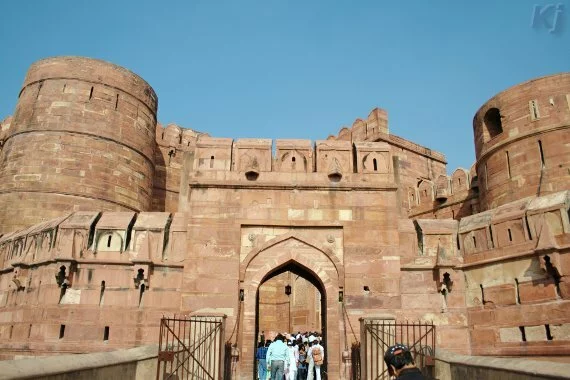
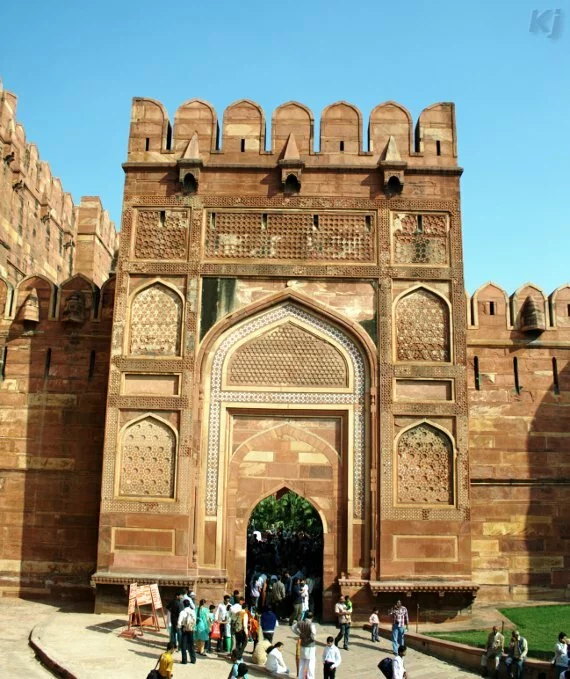
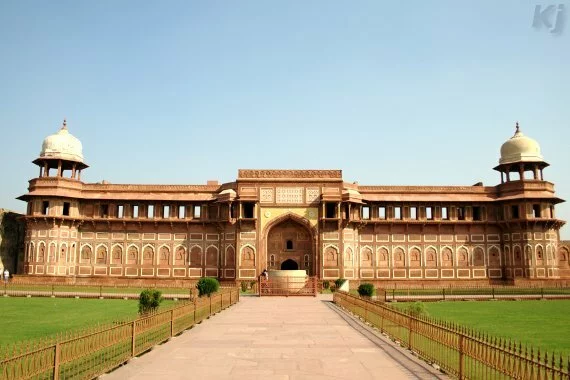
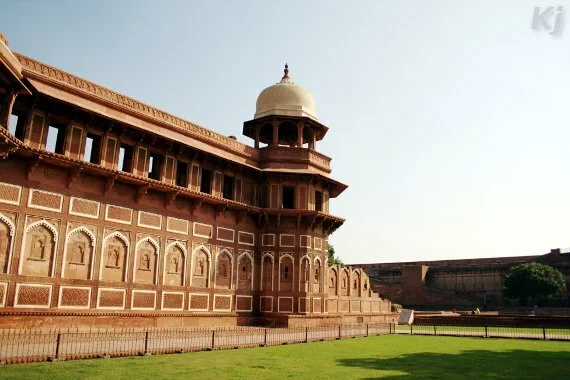
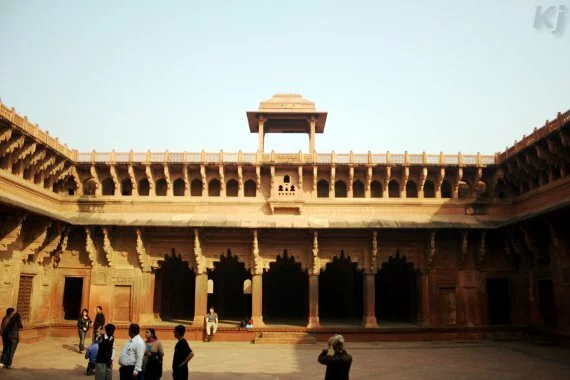
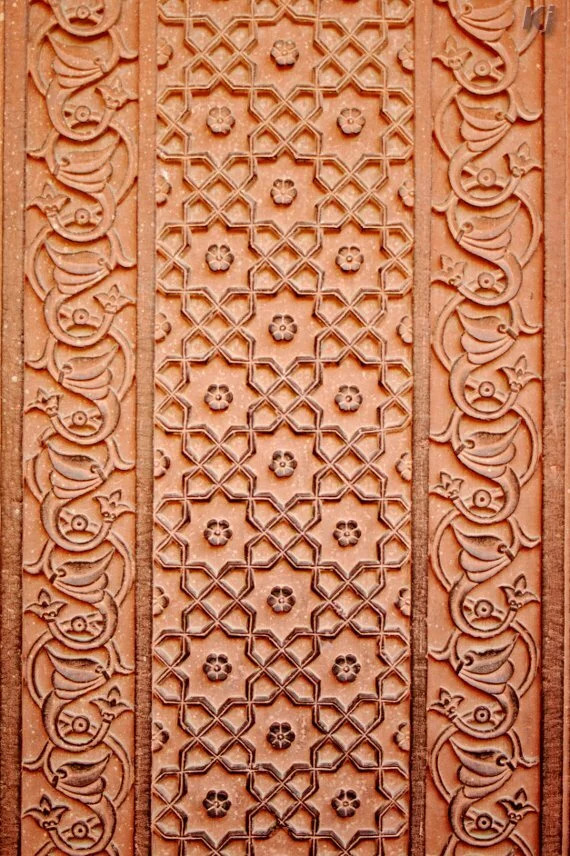
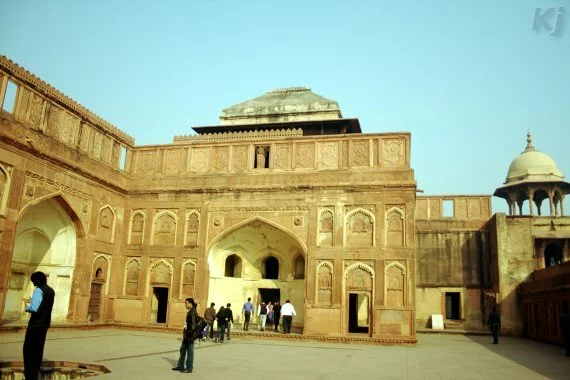
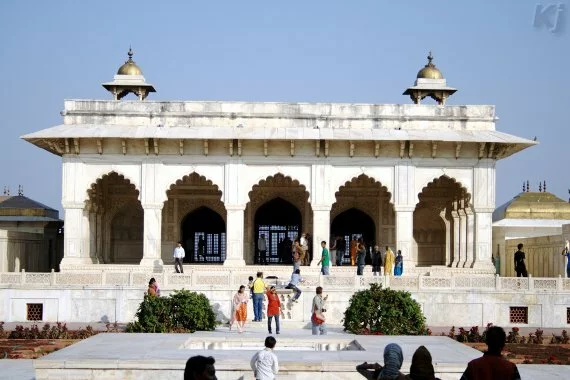
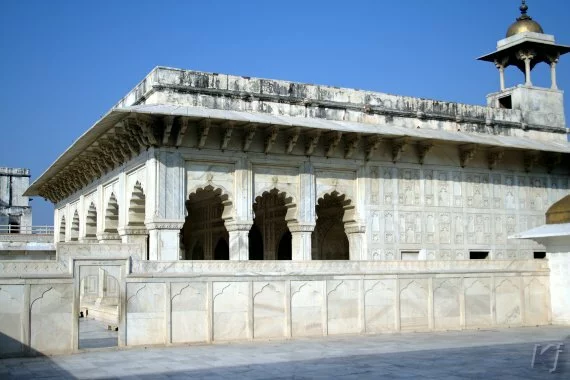
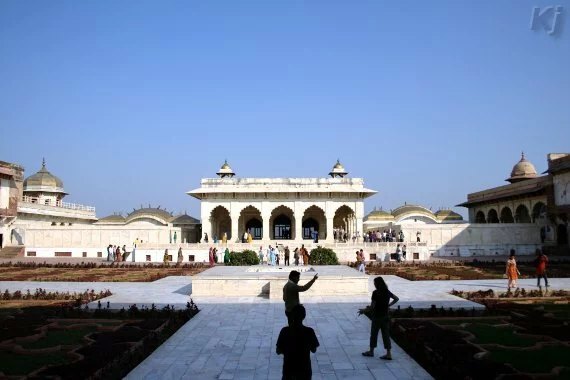
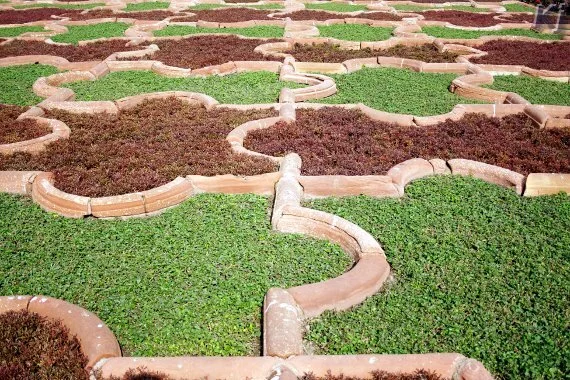

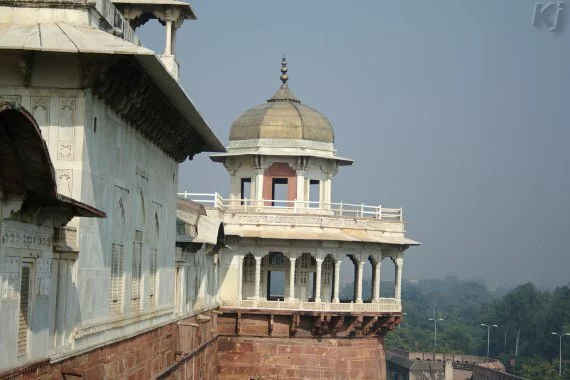
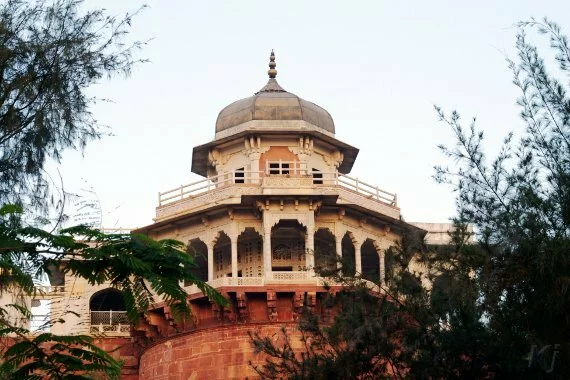
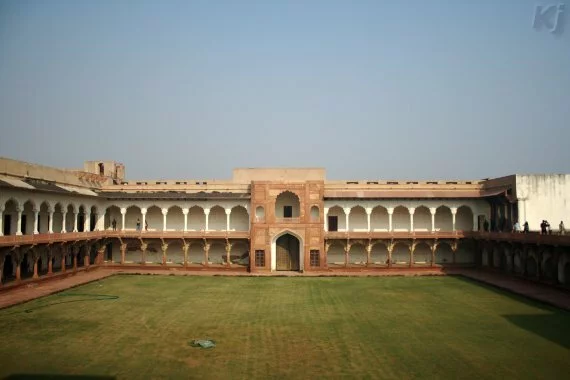
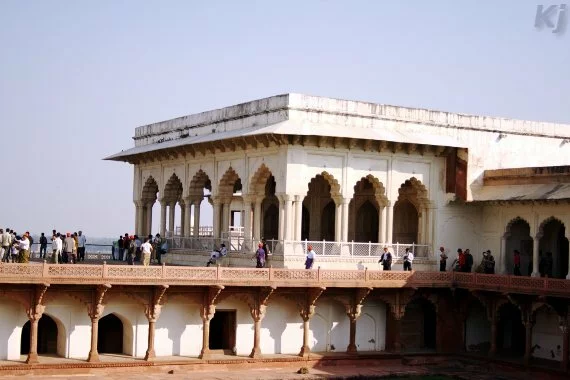
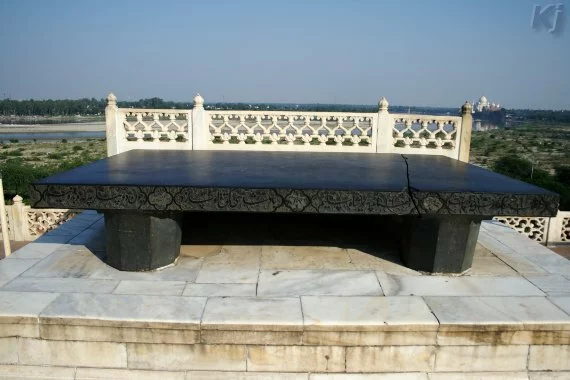

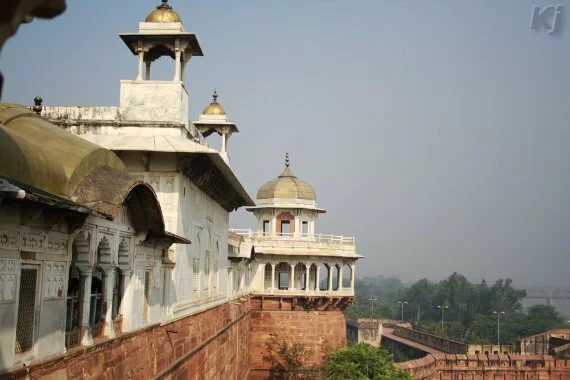
Comprehensive information about Agra Fort… It is such a beautiful building… truly enchanting…